FOOLPROOF CAKES Other Cookery Titles Available from the PublisherAfternoon TeaEasy Jams, Chutneys and PreservesBrilliant BiscuitsThe Curry SecretThe Takeaway Secret
FOOLPROOF CAKES
Victoria Combe

Constable & Robinson Ltd
5556 Russell Square
London WC1B 4HP
www.constablerobinson.com Originally published in the UK in 1998 as
Foolproof Cake Recipes,
by Robinson Publishing This edition published in Great Britain in 2014 by Robinson Selection and editorial material copyright
Daily Telegraph, 1998, 2014
Textual copyright Various, 1998, 2014
Illustrations copyright Firecatcher Creative 2014 The moral right of the author has been asserted. All rights reserved.
No part of this publication may be reproduced, stored in a retrieval system, or transmitted, in any form, or by any means, without the prior permission in writing of the publisher, nor be otherwise circulated in any form of binding or cover other than that in which it is published and without a similar condition including this condition being imposed on the subsequent purchaser. A CIP catalogue record for this book
is available from the British Library. ISBN 978-0-71602-388-3 (B-format paperback)
ISBN 978-0-71602-389-0 (ebook) Typeset in Bembo by Basement Press, Glaisdale
Printed and bound in Great Britain An Hachette UK Company
www.hachette.co.uk
CONTENTS
INTRODUCTION
Fresh back from honeymoon with sand still in my shoes my husband John announced that his parents were coming for afternoon tea. I blanched. Tea meant baking cakes a foreign and mysterious process that I had never dared attempt.
Quivering over my shiny new kitchen scales, I set about making ginger nuts because the recipe claimed they could not fail. But they could and they did. I had to hide the humiliating brown splodges glued to the baking tray and resort to a box of Mr Kipling. Knowing that this must not happen again, I appealed for help in a column to readers of the Daily Telegraph. Their response was wonderful. I received tried and tested recipes which had been family treasures through the generations, and through both world wars.
Given such encouragement, I set about learning how to bake cakes and I am still doing so. But this book is not about my own misadventures with baking tins. It is founded on the wisdom of readers who were generous enough to impart their own recipes for easy-to-make delicious cakes which have wooed in-laws, difficult children and even members of the W.I. Inspired by such riches, I felt moved to go back to the mixing bowl. I began with a Moist Lemon Cake () from Pam Daniels, of Norwich, which she claimed went down a bomb with the W.I. and had been a favourite of her late husband, who died just before their golden wedding anniversary.
Mrs Daniels insisted on free-range eggs. Admittedly, I was a bit cack-handed at grating the lemon, but coped well with measuring and wielding the food processor. I had to wait 40 minutes for the outcome, but it was worth it. I opened the oven door to see a risen, golden cake. My spirits soared. I marvelled at the number of women who are so proficient in the art of cake-making.
In this age of womens emancipation, we are expected to be coy about homely skills. The very idea of a woman in her pinny turning out a perfect cherry cake amounts to incorrect thinking. Nonetheless, when my cry for help went out, readers rallied with enthusiasm. They seemed to rejoice at the thought that a newly married woman might worry about the contents of a cake stand before offering tea to her mother-in-law. I held a mini-contest on readers recipes in our Wiltshire kitchen with two little boys who live nearby acting as judges. I made six cakes, all of which claimed to be idiot-proof.
They all came off, but Mrs Daniels Moist Lemon Cake was voted a clear winner by Harry, six, and his three-year-old brother Marcus. The runners-up also appear in this book. There is a splendid Chocolate Truffle Cake () from Barbara Jackson, of Penicuik in Midlothian. It was Mrs Jackson, generously imparting her mothers secret cake recipe, who warned me that home-bakers were a very evangelising species. One mouthful of her Sticky Ginger Cake and my face shone with the look of a new convert. I have learned, to my astonishment, that I gain sweet pleasure from seeing a freshly baked cake standing proud on a baking tray.
I know it is not what is expected of a young woman on a Sunday afternoon, when there is paragliding and deep-sea diving on offer. Yet in a funny sort of way it is exciting and there is plenty of risk. As Adam Lindsay Gordon had it: There is no game that is worth a rap For a rational man to play Into which no accident, no mishap Can possibly find its way. So here I am, the new evangelist. I cannot yet pretend to know all about baking, and I learn more with every cake. But what the authors of these recipes offer is a wealth of knowledge which I hope may inspire other novices like me to dabble in the mixing bowl.
A warning note: there is a lot of kit involved. There seems no limit to the choice of baking tins. And when it comes to the ingredients, I quake at the variety of flours and sugars on offer. My humble advice is to keep your eye on the kitchen scales. My sister Rachel, who helped to build my confidence in early baking days, advised me that baking was essentially a science. If the chemistry was to work, she said, I needed to be precise in my measurements.
Experienced cooks may use a pinch of this and a handful of that. Novices cannot. Rachel gave me an American Pound Cake recipe () which she inherited from her great-grandmother-in-law from Louisiana. Rachel made this rich, buttery cake for us at home and it was devoured by our three brothers before it had time to cool in the tin. It is a big, hearty cake for hungry chaps. My mother-in-law, Pam Whitwam, who involuntarily started the whole thing rolling, has considerately passed on her brilliant Chocolate Cake recipe () which kept her two sons very happy and which my husband John chose for his birthday cake when a child.
My first attempt won modified praise. Not quite as good as Mum made. Never mind. Novices have to start somewhere. This is meant to be a vote of thanks to so many correspondents who encouraged me to travel down the wiggly road towards perfect cake-making. 
1
CAKE KNOW-HOW
Do not be put off by the formidable baking sections in supermarkets, which are always surrounded by brisk, efficient shoppers whom you would never dare ask for advice.

1
CAKE KNOW-HOW
Do not be put off by the formidable baking sections in supermarkets, which are always surrounded by brisk, efficient shoppers whom you would never dare ask for advice.
Here is a crash course in ingredients which will help you bluff your way to the check-out, unscathed. Flour Some people rely on self-raising for every cake, others are fussier about the flours they use. There are two types: high-gluten (strong) and low-gluten (weak). A strong flour, which is used in bread-making, has a gluten content of 1015 per cent, which gives it good raising power and a light, open texture. A soft flour, with a low gluten content of 710 per cent, absorbs fat well, gives a smaller rise and a finer texture, and is best for most cakes and biscuits. Choosing between plain and self-raising is like choosing between an automatic and a geared car.
Next page


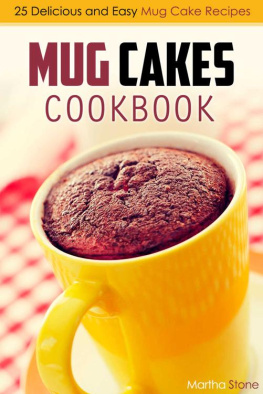
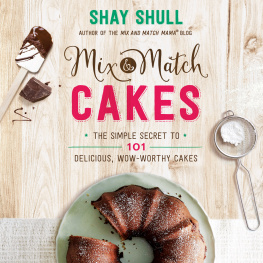

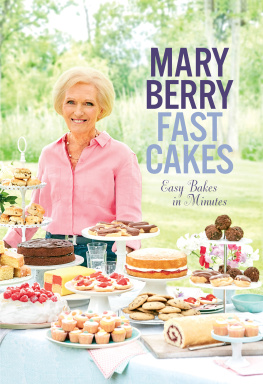
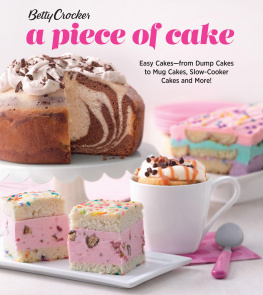
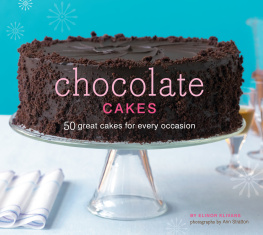
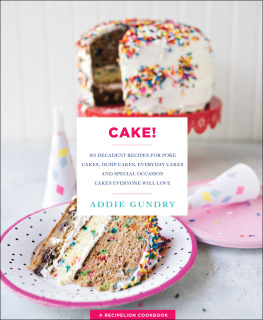
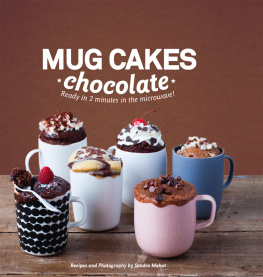
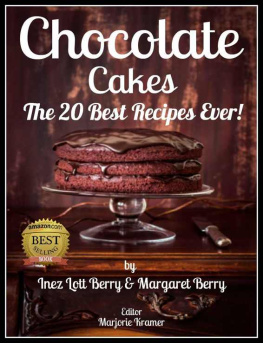
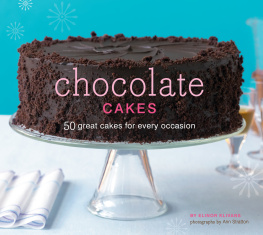
 Constable & Robinson Ltd
Constable & Robinson Ltd